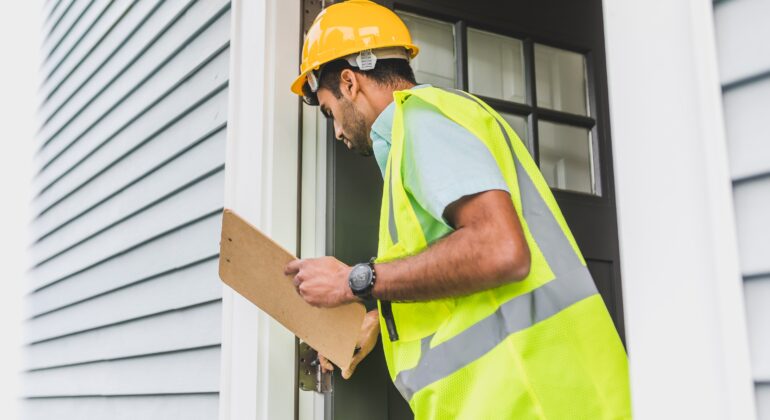Navigating the Party Wall Process: Tips and Tricks for Success
Planning a construction project can be an exciting endeavor, but it often comes with its fair
share of challenges. One such challenge is navigating the Party Wall process. Whether you’re a
homeowner embarking on a home extension or a developer undertaking a commercial project,
understanding the ins and outs of this process is crucial for a smooth and successful
construction journey. In this article, we will share valuable tips and tricks to help you navigate
the Party Wall process with confidence. From understanding the legal requirements to building
positive relationships with your neighbors, we will provide you with expert insights and practical
advice to ensure a stress-free experience. So, whether you’re new to the world of construction
or a seasoned professional, join us as we unpack the secrets to a successful Party Wall process
and unlock the door to a seamless construction project.
What is the Party Wall Process?
The Party Wall process refers to the legal procedure outlined in the Party Wall etc. Act 1996,
which aims to protect the rights of both Building Owner and Adjoining Owners during
construction works. This legislation is designed to ensure that any proposed works that could
potentially affect a shared Party Wall or boundary are carried out in a fair and considerate
manner. The Party Wall process involves the appointment of a Party Wall Surveyor, who are
responsible for facilitating communication between the Building Owner and Adjoining Owner,
and for resolving any disputes that may arise during the construction process.
Understanding the importance of the Party Wall Act is crucial for anyone planning a construction
project, as failure to comply with the legal requirements can lead to costly delays, legal disputes,
and potential damage to neighbor relationships. By familiarising yourself with the Party Wall
process, you can ensure that your construction project proceeds smoothly and that you maintain
positive relationships with your neighbors throughout the process.
Party Wall Process Step-by-Step:
The Party Wall process can be broken down into several key steps, each of which plays a vital
role in ensuring a successful construction project. Understanding these steps will enable you to
navigate the process with confidence and avoid any potential pitfalls along the way.
- Serving a Party Wall Notice: The first step in the Party Wall process is to serve a Party
Wall Notice to your Adjoining Owner(s). This notice outlines the proposed works and provides
important information regarding the Party Wall process. It is essential to serve this notice
correctly, as failure to do so can invalidate the entire process and lead to further delays and
legal complications later on. - Adjoining Owner(s) response: Once the Party Wall Notice has been served, the Adjoining
Owner has a specific timeframe in which they can respond. They can either provide their
consent to the proposed works or dissent and appoint a Party Wall Surveyor. It is
essential to maintain open lines of communication with the Adjoining Owner during this stage to
ensure a positive and collaborative approach to the construction project. - Appointment of Party Wall Surveyor: If the Adjoining Owner dissents, they have a choice
of either appointing one ‘Agreed Surveyor’ to act on behalf of both parties or for both the
Building Owner and the Adjoining Owner to appoint their own individual Party Wall Surveyor.
With the latter – these surveyors will act independently to protect the interests of their respective
clients and facilitate the Party Wall process. It is crucial to select experienced and impartial
Party Wall Surveyor who can navigate any potential disputes and ensure a fair resolution. - Agreement of Party Wall Awards: The appointed Party Wall Surveyor will work together
to draft the Party Wall Awards, which outline the rights and responsibilities of both the Building
Owner and the Adjoining Owner. The party wall award detail the scope of the proposed works, the
agreed-upon working hours, access arrangements, construction related risk mitigation
measures and any other relevant factors. Once both parties have agreed to the terms of the
Party Wall Award, they become legally binding and must be adhered to throughout the
construction process. - Carrying out the works: With the Party Wall Awards in place, the Building Owner can
proceed with the construction works in accordance with the agreed-upon terms. It is essential to
follow the guidelines outlined in the Party Wall Award and to keep the Adjoining Owner informed
of any significant milestones or potential disruptions. Maintaining open lines of communication
and addressing any concerns promptly will help foster positive neighbor relationships and
ensure a smooth construction journey.
Tips for Navigating the Party Wall Process:
Navigating the Party Wall process can seem daunting, but with the right approach and
preparation, you can ensure a successful outcome. Here are some valuable tips to consider:
- Start early: It is crucial to initiate the Party Wall process as early as possible. Serving the
Party Wall Notice(s) well in advance will provide ample time for discussions, negotiations, and
the appointment of a Party Wall Surveyor. Starting early will help you avoid unnecessary delays
and ensure that all parties involved have sufficient time to prepare and understand their rights
and obligations. - Maintain open lines of communication: Building positive relationships with your neighbors
is key to a smooth and successful construction project. From the initial Party Wall Notice to the
completion of the works, ensure that you maintain open and transparent lines of communication
with the Adjoining Owner. Address any concerns promptly and be proactive in providing updates on the progress of the project. This will help build trust and foster a collaborative approach throughout the Party Wall process. - Engage experienced professionals: The Party Wall process is a complex legal procedure
that requires expert knowledge and experience. Engaging the services of experienced Party
Wall Surveyors and party wall agreements legal professionals will ensure that you navigate the process smoothly and
avoid any potential pitfalls. These professionals can guide you through the various stages of the
process, provide expert advice, and help resolve any disputes that may arise. - Be prepared for potential challenges: While the Party Wall process aims to facilitate a
smooth construction journey, challenges can still arise. It is essential to be prepared for potential
disagreements, delays, and additional costs. By anticipating these party fence walls challenges and having contingency plans in place, you can minimise their impact on your construction project and
ensure a successful outcome.
Working with Party Wall Surveyors:
The role of Party Walls Surveyors is crucial in ensuring a fair and transparent Party Wall
process. These professionals act as independent mediators, facilitating communication between
the Building Owner and the Adjoining Owner and ensuring that the rights and obligations of both
parties are protected. When selecting Party Walls Surveyors, consider the following:
- Experience: Look for Surveyors with reasonable experience in Party Wall matters. They should have a deep understanding of the Party Wall Act and the Party Wall process.
- Impartiality: Party Walls Surveyors must act impartially and in the best interests of their clients. Ensure that your chosen Surveyor is independent and free from any conflicts of interest.
- Communication skills: Effective communication is essential throughout the Party Wall process. Look for Surveyors who are skilled in resolving conflicts and maintaining positive neighbor relationships.
- Efficiency: Timely resolution of disputes is vital to keep the construction project on track. Choose a Surveyor who can work efficiently and effectively to ensure a smooth process.
The Role of the Adjoining Owner in the Process:
The Adjoining Owner plays a crucial role in the Party Wall process. It is important to consider
their perspective and address any concerns they may have. Here are some key points to keep
in mind when dealing with the Adjoining Owner:
- Open communication: From the outset, establish open lines of communication with the Adjoining Owner. Address any concerns they may have and keep them informed of the proposed works and their potential impact.
- Respect their rights: The Party Wall Act is designed to protect the rights of both parties. Ensure that the Adjoining Owner’s rights and interests are respected throughout the process.
- Timely response: The Adjoining Owner has a specific timeframe in which they can respond to the Party Wall Notice. The Act stipulates a 14-day notice period followed by a 10-day reminder if in the instances the Adjoining Owner fails to respond within the first 14-day statutory notice period. Encourage them to provide their response within the initial 14-day timeframe to avoid unnecessary delays.
By approaching the Party Wall process with a co-operative and considerate mindset, you can
build positive relationships with the Adjoining Owner and ensure a smooth construction journey.
The Role of the Building Owner in the Process:
As the Building Owner, it is your responsibility to initiate the Party Wall agreement process and ensure its
smooth progression. Here are some key considerations for a Building Owner:
- Serve the Party Wall Notice(s) correctly: The Party Wall Agreement Notice must be served correctly to avoid any party wall agreements legal complications. Familiarise yourself with the requirements outlined in the Party Wall Act and ensure that the notice is served within the appropriate time frame.
- Appoint competent Party Wall Surveyors: Selecting an experienced and impartial Party Wall Agreement Surveyor is crucial for a successful process. Engage a surveyor who can guide you through the process, protect your interests, and maintain positive neighbour relationships.
- Adhere to the Party Wall Award: Once the Party Wall Award(s) have been agreed upon, it is essential to adhere to their terms. Follow the guidelines outlined in the Award(s), maintain open lines of communication with the Adjoining Owner, and address any concerns promptly.
By fulfilling your responsibilities as the Building Owner and maintaining a co-operative
approach, you can navigate the Party Wall agreement process with confidence and ensure a successful
construction project.
Party Wall Awards Process FAQs:
What is the purpose of the Party Wall process?
The Party Wall agreement process is designed to protect the rights and interests of both Building Owners
and Adjoining Owners during construction works that could potentially affect shared Party Walls
or boundaries. It aims to facilitate open communication, fair negotiations, and the resolution of
any disputes that may arise.
Do all construction projects require a Party Wall Notice?
Not all construction projects require a Party Wall Agreement Notice. The Party Wall Act applies to specific
types of works, including building on or near a shared Party Wall, excavating near a shared
boundary, and modifying a Party Wall. It is essential to understand whether your project falls
under the scope of the Party Wall Act and to serve a Party Wall Notices accordingly.
What happens if the Adjoining Owner dissents?
If the Adjoining Owner dissents, they have the right to appoint their own Party Walls Surveyors.
Both the Building Owner and the Adjoining Owner’s Surveyors will then work together to draft
the Party Wall Awards, ensuring that the rights and obligations of both parties are protected.
What if a dispute arises during the Party Wall process?
In the event of a dispute, the appointed Party Walls Surveyors will work together to find a
resolution. If they are unable to agree, a Third-Surveyor is appointed prior to the
commencement of the negotiations to make a final decision. It is crucial to engage experienced
Party Walls Surveyors who can navigate potential disputes and facilitate fair resolutions.
To Conclude:
Navigating the Party Wall agreement process is a crucial step in ensuring a successful and stress-free
construction project. By understanding the party wall agreements legal requirements, following the step-by-step process, and engaging experienced professionals, you can navigate this process with
confidence. Building positive relationships with your neighbors, maintaining open lines of
communication, and addressing any concerns promptly will help foster a co-operative approach
and ensure a smooth construction journey. Remember, the Party Wall agreement process is designed to
protect the rights and interests of all parties involved, and by adhering to its requirements, you
can unlock the door to a seamless construction project.












